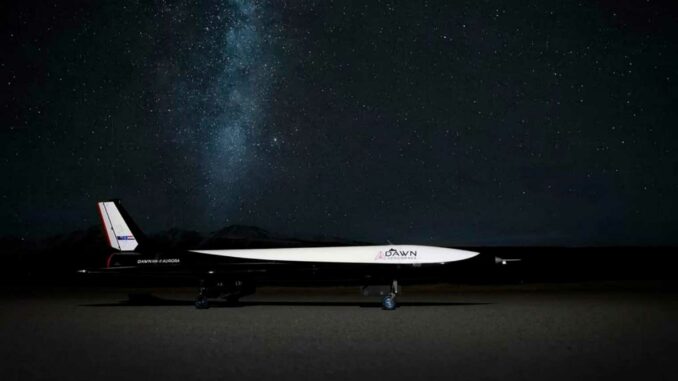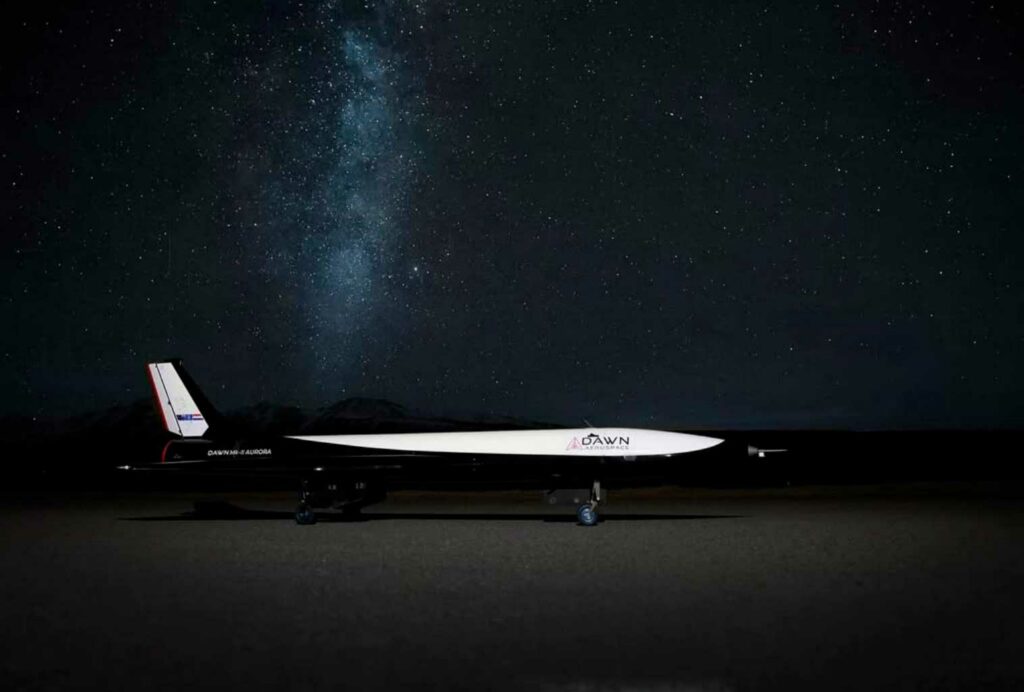
Dawn Aerospace is marketing the Aurora, a reusable suborbital space plane offering flights at Mach 3.5 and a payload capacity of 6 kg.
New Zealand-based Dawn Aerospace announced on May 22, 2025, that it is offering its unmanned suborbital space plane, the Aurora, for sale. Designed to carry payloads of 6 kg to an altitude of 100 km, the Aurora adopts an aviation-inspired business model, where customers operate the vehicle themselves. Powered by an engine using 90% hydrogen peroxide and D60 kerosene, the aircraft reaches speeds of Mach 3.5 and offers approximately three minutes of microgravity per flight. With rapid reusability, the Aurora is targeting applications in microgravity research, life sciences, semiconductor research, and defense payload testing.

Aurora design and technical performance
The Aurora is an unmanned suborbital space plane developed by Dawn Aerospace, capable of carrying a payload of 6 kg to an altitude of 100 km. Powered by an engine using 90% hydrogen peroxide and D60 kerosene, the aircraft reaches speeds of Mach 3.5 (approximately 4,300 km/h). During a flight in November 2024, the Aurora reached a speed of Mach 1.12 and an altitude of 25.1 km, setting a record for the fastest climb above 20 km from a runway.
The Aurora weighs 450 kg when fully loaded and can take off from a 1,000-meter runway. It offers approximately three minutes of microgravity per flight, with a total flight time of approximately 30 minutes, including the gliding return to the runway after re-entry into the atmosphere.
Business model inspired by commercial aviation
Unlike traditional launch service models, Dawn Aerospace offers the Aurora for sale, allowing customers to operate it themselves. This model, inspired by commercial aviation, aims to expand the potential market by offering a more accessible and flexible solution. With its rapid reusability, the Aurora can perform multiple flights per day, reducing operational costs.
The price per flight is estimated at around $100,000 (approximately €92,000), with potentially higher costs for customized missions. The Aurora is designed to perform up to 100 flights per year, with an expected lifespan of 1,000 flights, generating an estimated total revenue of $100 million (approximately €92 million) per aircraft.
Applications and target markets
The Aurora targets several markets, including microgravity research, life sciences, semiconductor research, and defense payload testing. Institutions such as Arizona State University, California Polytechnic State University, and Johns Hopkins University have already used earlier versions of the Aurora for test flights. Scout Space, a company specializing in space awareness, has also used the Aurora to test its systems.
The global market for suborbital flights is growing, with increased demand for research and development, space tourism, cargo delivery, and military applications. Reusable vehicles such as the Aurora are particularly attractive due to their cost-effectiveness and flexibility.

Integration into existing infrastructure
The Aurora is designed to take off and land on standard runways, without the need for dedicated vertical launch infrastructure. This allows for easy integration into existing airports and offers new opportunities for underutilized spaceports. The Global Spaceport Alliance (GSA) has praised this approach, noting that many spaceports do not conduct regular launches due to a lack of infrastructure or their proximity to densely populated areas.
With a small, reusable system that can operate from a standard runway, there is no reason why a spaceport with a runway cannot offer regular access to space.
Outlook and implications for the space industry
The introduction of the Aurora by Dawn Aerospace represents a significant evolution in access to space. By adopting a model inspired by commercial aviation and offering a reusable and flexible solution, the Aurora could democratize access to space for a variety of applications. This could stimulate innovation, reduce costs, and open up new opportunities for research, industry, and defense.
War Wings Daily is an independant magazine.